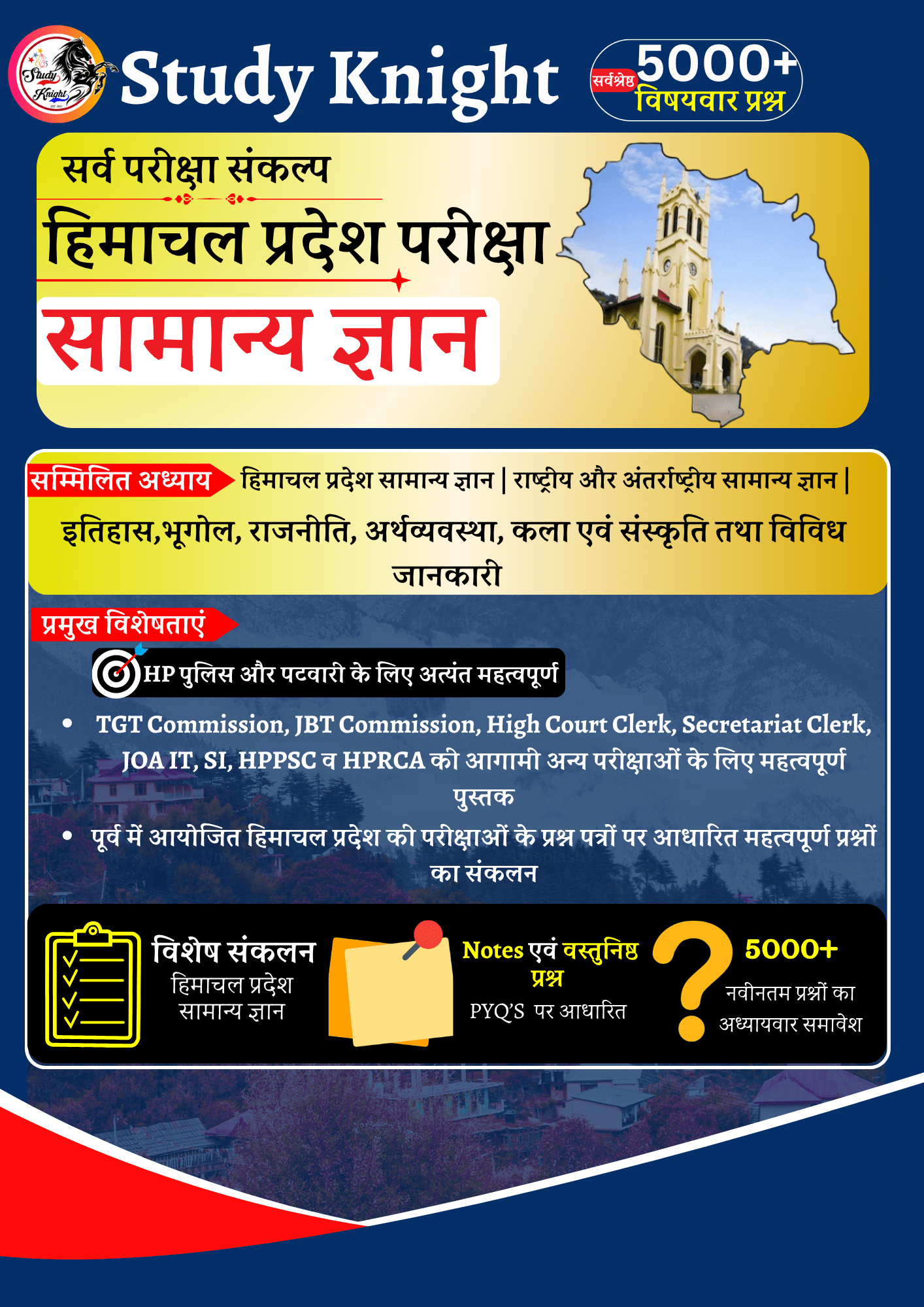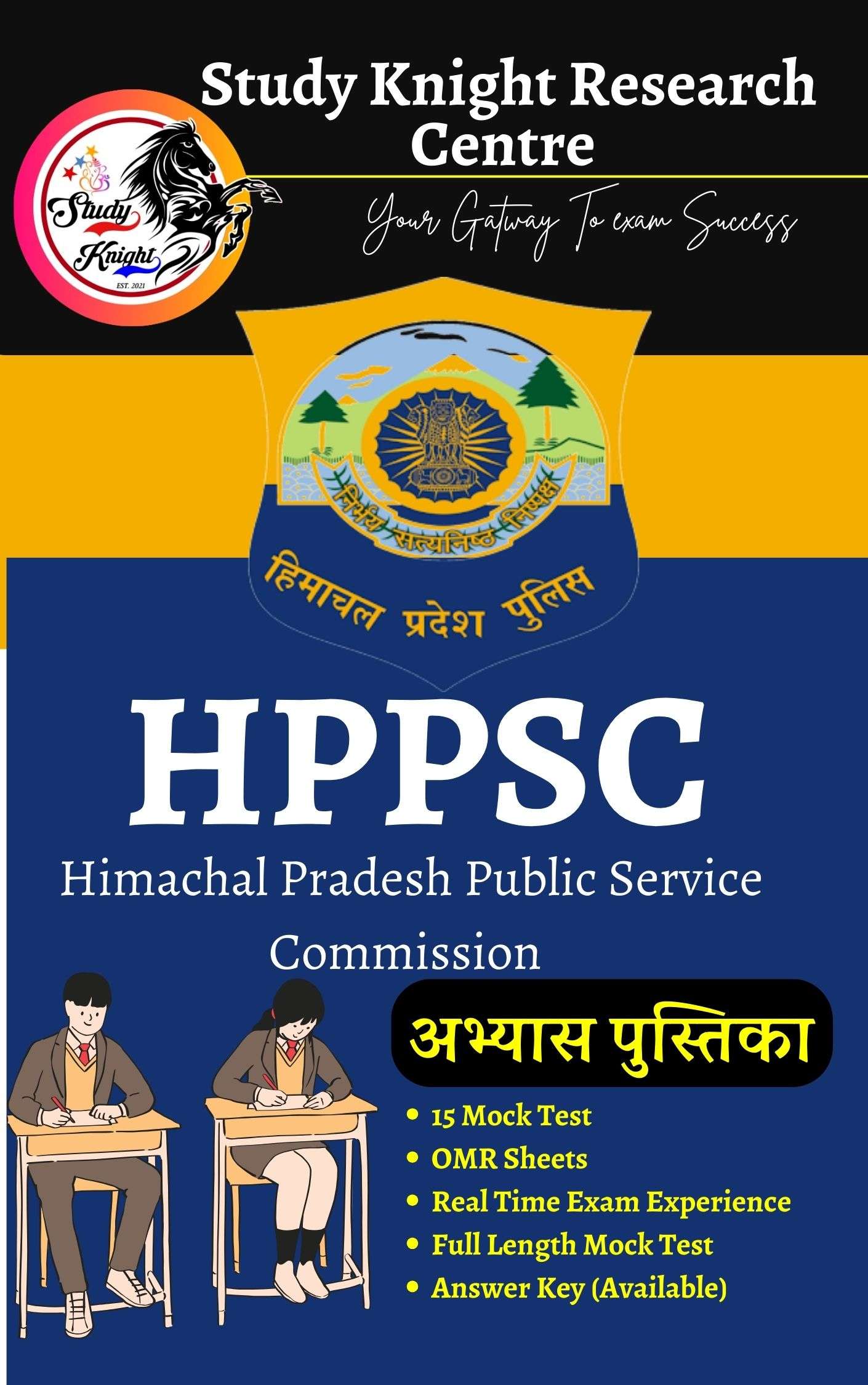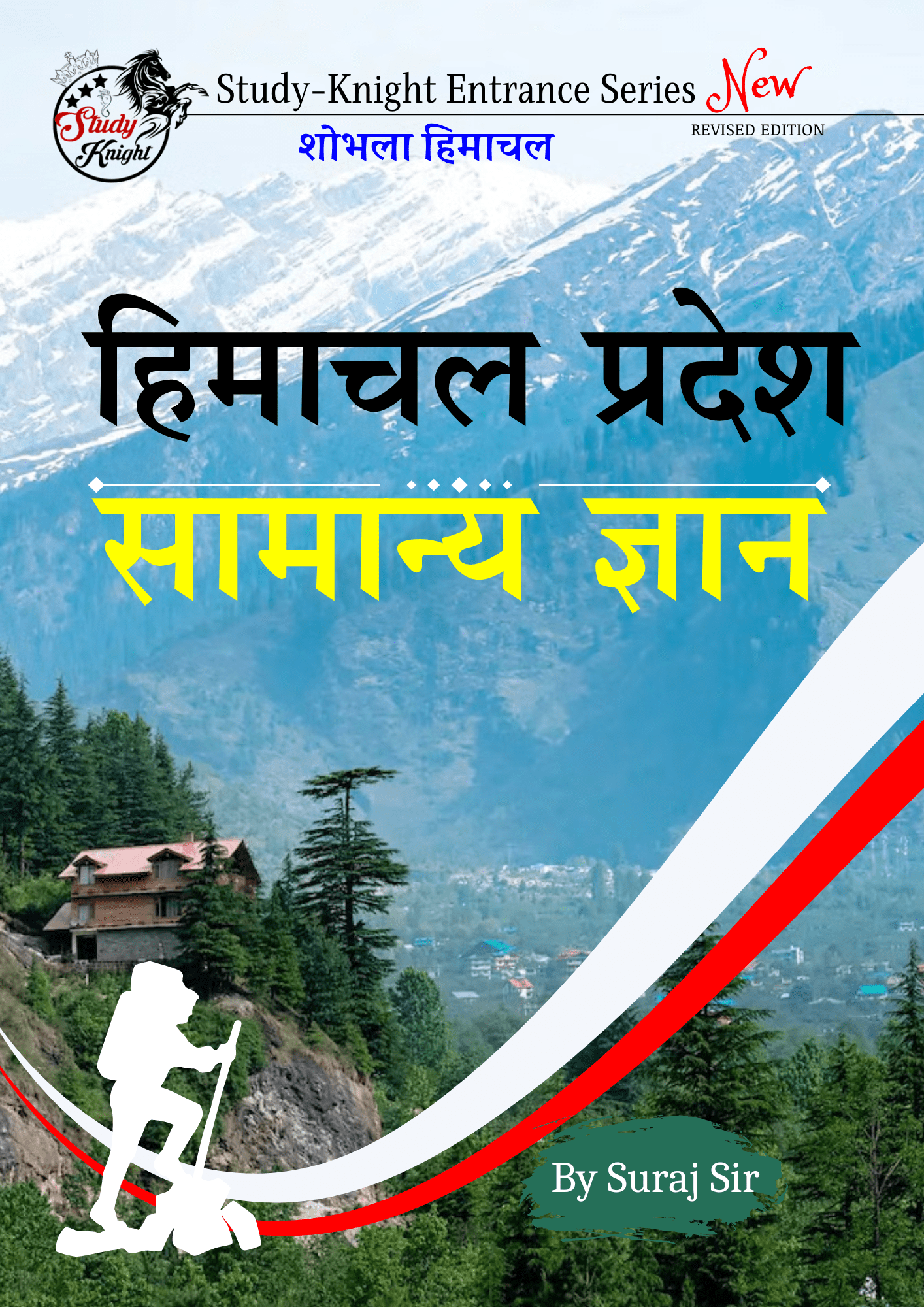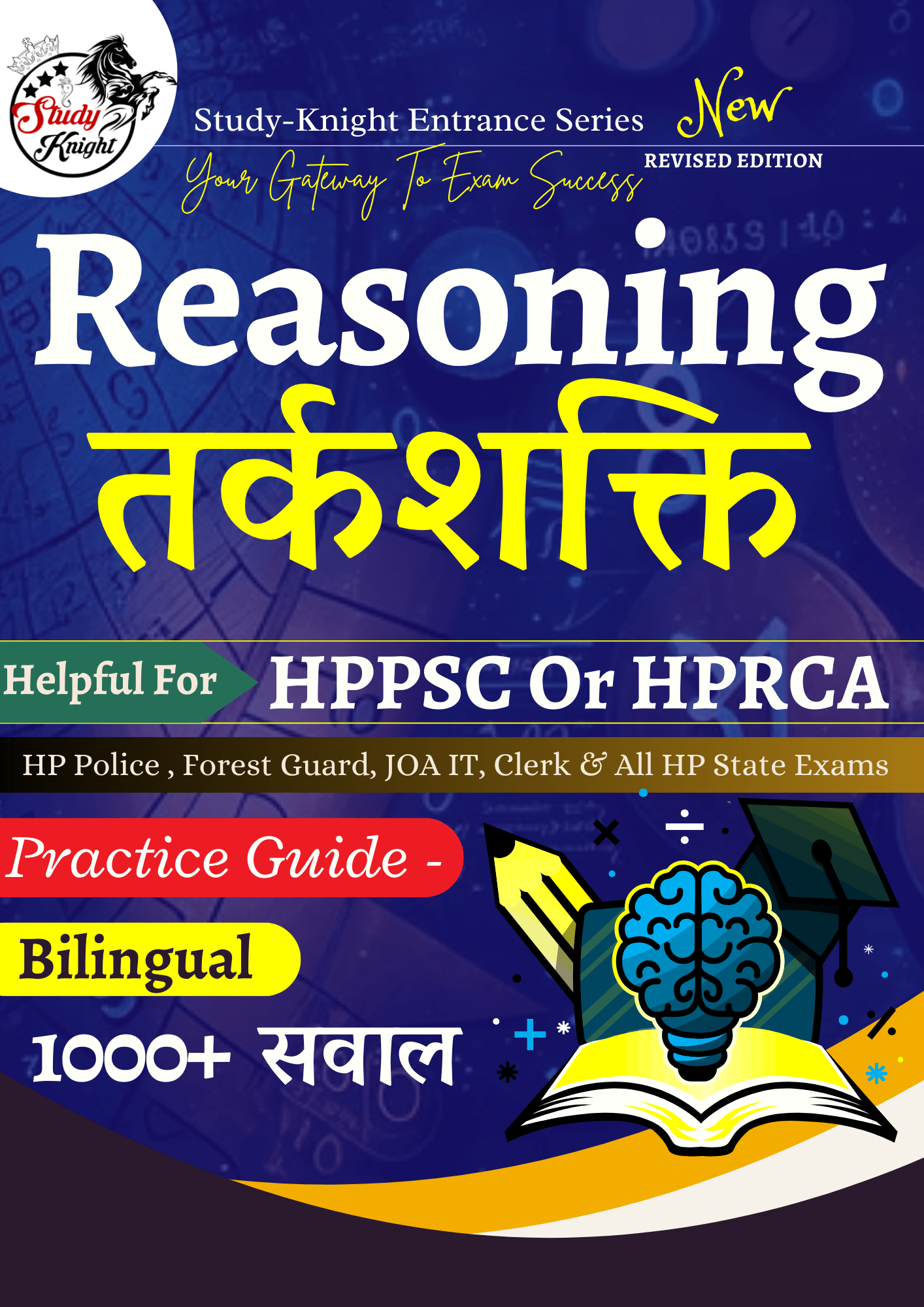valleys of Himachal Pradesh
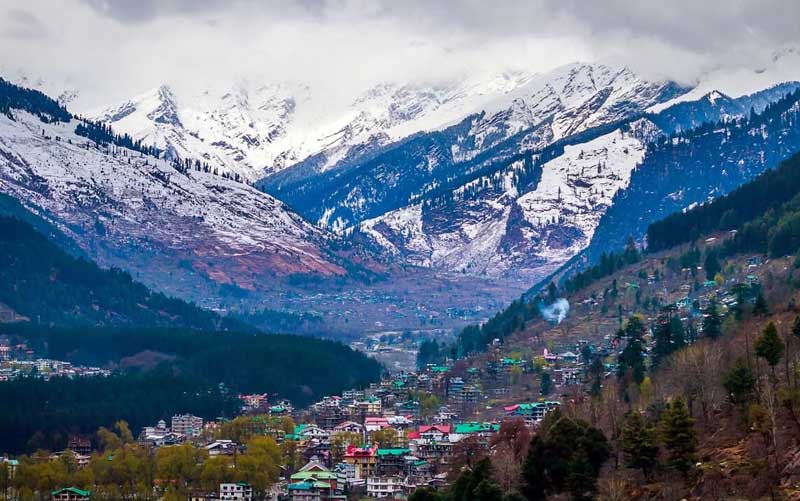
1. Chamba Valley (District Chamba)
- Also Known As: Valley of Honey and Milk
- Features: Famous for medicinal herbs and a variety of flowers.
- Important Settlements: Chamba, Dalhousie, Khajjiar, Bharmaur
- Inhabitants: Chambial

Overview: Chamba Valley, also known as Ravi Valley, is a picturesque and relatively unvisited region in Himachal Pradesh, India. With recent improvements in communication, the valley is becoming more accessible, revealing its enchanting scenery and charming villages.
Geography and Flora: The valley features terraced fields with vegetation such as wild olive, pomegranate, fig trees, acacia, Shisham, and Pipal. It lies below 2,550 meters in altitude, supporting two crops per year. The northern slopes are forested, while the southern slopes are often bare. Chamba Valley is famous for its medicinal herbs and diverse flowers.
Demographics and Towns: Moderately populated, the valley’s residents are known for their hardworking and honest nature. Key towns include Chamba, Bharmaur, Dalhausie, and Khajjiar. Adjacent Pangi Valley, extending along the Chenab River, is celebrated for its remote beauty.
2. Pangi Valley
(District Chamba)
- Location: Adjoining Chamba Valley, extending along the Chenab River
through the Pir Panjal range. - Characteristics: One of the remotest and most beautiful
tracts of the western Himalayas.
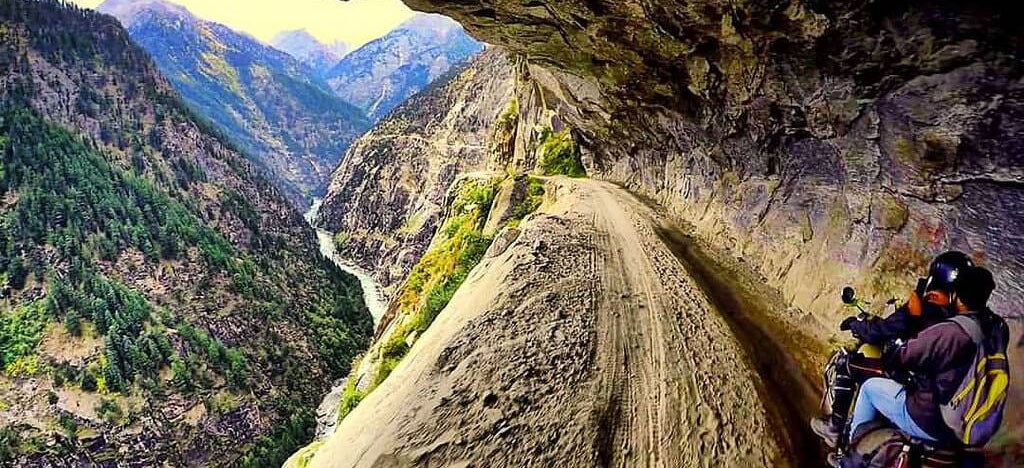
3. Monkey Valley – bandar Ghati –
(District Chamba)
- Location: Bharmaur area of Chamba.
- Historical Note: Pilgrims used to crawl through this valley
to reach Manimahesh Kailash, hence the name ‘Bandar Ghati’ or Monkey
Valley.
4. Chandra Valley
(District Lahaul-Spiti)
- Also Known As: Rangoli
- Formation: Formed by the Chandra River.
- Important Settlement: Khoksar
5. Bhaga Valley
(District Lahaul-Spiti)
- Also Known As: Gara or Punam
- Formation: Formed by the Bhaga River.
6. Chandra-Bhaga Valley
(District Lahaul-Spiti)
- Also Known As: Pattan Valley
- Characteristics: Called the Orchards and Granary of
Lahaul-Spiti, formed by the union of Chandra and Bhaga Rivers.
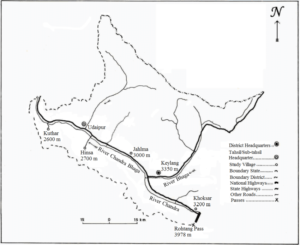
7. Lahaul Valley
(District Lahaul-Spiti)
- Location: North of the Pir Panjal and main Himalayan ranges.
- Formation: Comprised of rivers Chandra and Bhaga (till Tandi) and Chenab
(from Tandi to Udaipur).
Lahaul and Spiti Valley
Overview: The Lahaul and Spiti Valleys are north of the Pir Panjal and Himalayan ranges. Lahaul, formed by the Chandra and Bhaga rivers and the Chenab River, extends from Tandi to Udaipur. Spiti Valley lies between the Himalayan and Zanskar ranges, shaped by the Spiti River.
Geography and Climate: The valleys range from 3,000 to 6,500 meters in elevation and experience severe winters with heavy snowfall. Lahaul has fertile land and better irrigation, supporting crops like barley and buckwheat. Spiti is drier, colder, and more challenging for habitation.
Flora and Culture: Lahaul is known for its fertile soil and crops. Both valleys are famed for their Buddhist monasteries. The Pin Valley, a tributary of Spiti, is part of the Trans-Himalayan zone. Lahaul’s people are cheerful, kind, and industrious, though also superstitious.
8. Spiti Valley
(District Lahaul-Spiti)
- Formation: Formed by the Spiti River, situated between the main Himalayan
and Zaskar ranges. - Important Settlement: Kaza
- Literary Reference: Described by Rudyard Kipling in “Kim” as “a
world within a world” and a “place where the gods live.”
9. Lingti Valley
(District Lahaul-Spiti)
- Location: Eastern Spiti.
- Features: Longest (60 km) and largest side valley of Spiti, known for
shale and fossils dating back 250 million years.
/30-stades/media/media_files/CdOpugqo5CEyEDWIx8ru.jpg)
Question: Which valley in Himachal Pradesh is known for its frozen waterfall during winter?
A) Kullu Valley
B) Baspa Valley
C) Lingti Valley
D) Kangra Valley
Correct Answer: C) Lingti Valley
Explanation: Lingti Valley, situated in the Spiti region of Himachal Pradesh, is famed for its stunning frozen waterfall during the winter season. This natural wonder creates a breathtaking spectacle as the waterfall freezes into a dramatic ice formation amidst the rugged Himalayan landscape.
Additional Information:
- Location: Lingti Valley is part of the Spiti region, known for its harsh winter climate and striking landscapes.
- Historical Significance: The valley includes the Lhalung village, home to the ancient Lhalung Monastery established in the 10th century by Rinchen Zangpo.
- Local Meaning: ‘Lingti’ in the Spitian language means “an instrument that cuts rocks,” reflecting the valley’s rugged terrain.
- Wildlife Sanctuary: The valley was notified as part of the Kibber Wildlife Sanctuary in the mid-1980s.
10. Mulang Valley
(District Lahaul-Spiti)
- Location: East of Baralacha Pass between Chandra and Spiti rivers
drainage basins.
11. Pin Valley
(District Lahaul-Spiti)
- Formation: Formed by the Pin River, a tributary of the Spiti River.
- Features: Jagged rocks and fossil-rich gravel bars. Highest point: Pin
Parvati Jot (5490 m), Lowest point: Mud Pharka (3355 m).
12. Baspa Valley
(District Kinnaur)
- Also Known As: Sangla Valley
- Formation: Formed by the Baspa River.
- Features: Most beautiful and romantic valley. Highest village: Chitkul
(3437 m). Vegetation includes deodars, blue pines, firs, and silver birch.
12.1 Baspa or Sangla Valley
Baspa (Sangla) Valley
Overview: Baspa Valley, also known as Sangla Valley, is located in Kinnaur district, Himachal Pradesh. Known for its beauty and romance, the valley ranges from 1,830 meters at the Baspa River’s confluence with the Satluj to 3,475 meters at Chitkul.
Geography and Flora: The Baspa River flows for about 95 kilometers through richly cultivated land. The valley is noted for green pastures, colorful flowers, and fruit trees. The upper reaches are snow-covered year-round, while the lower part supports Deodars, blue pines, and firs. The region is renowned for trout fishing and has a unique historical and cultural heritage.
13. Other Valleys in
Kinnaur District
- Hangrang Valley
- Rupa Valley
- Mulgan or Mulgaon Valley
14. Balh Valley
(District Mandi)
- Also Known As: Sundernagar Valley
- Features: Open broad dun type valley.
- Extent: From Gutkar (North) to Sundernagar (South) and Baggi (East) to
Galma (West). - Notable Projects: Indo-German agriculture project started in
1962.
Balh Valley
Overview: Balh Valley, also known as Sundernagar Valley, is in Mandi district, Himachal Pradesh. This broad, open dun-type valley lies between the Shimla Ridge and the Shivalik hills.
Geography and Agriculture: Stretching from Gutker to Sundernagar and Baggi to Gumma, the valley is divided by the Suketi Stream. The soil is light grey to brown and loamy, ideal for crops like wheat, maize, sugarcane, ginger, and paddy. The Indo-German Agriculture Project, started in 1962, supports mixed farming, dairying, animal husbandry, vegetable cultivation, and horticulture.
15. Other Valleys in
Mandi District
- Chauntra Valley (Jogindernagar)
- Chuhar Valley
- Sandhol Valley
16. Kullu Valley
(District Kullu)
- Also Known As: Valley of the Gods
- Formation: Formed by the Beas River.
- Characteristics: Broad, open valley between the Pir Panjal,
Lower Himalaya, and Great Himalayan ranges. - Attractions: Naggar Castle, Nehru Kund, Roerich Art Gallery, Hidimba Temple,
Manu Temple, hot water springs.
Kullu Valley
Overview: Kullu Valley is renowned for its majestic hills, pine and deodar forests, and apple orchards. Shaped by the Beas River, it features stunning landscapes with cataracts, gorges, and cliffs.
Geography and Flora: The valley, at 1,200 meters altitude, enjoys a pleasant climate with minimal snowfall and is abundant in wildflowers. Naggar offers attractions like Naggar Castle, while Manali, at nearly 2,000 meters, is a key resort with sites such as Hadimba Devi Temple and Rohtang Pass. The Parvati Valley is home to the healing Manikaran hot springs.
17. Other Valleys in
Kullu District
- Seraj Valley
- Parvati Valley
18. Pabbar Valley
(District Shimla)
- Formation: Drained by the Pabbar River, originating from Chandra Nahan
Lake. - Extent: From Hatkoti to Tikri at the base of Chanshal.
- Notable Feature: Famous for Trout Fish introduced by Glover
in 1938-39.
18.1 Pabbar or Rohru Valley
Pabbar (Rohru) Valley
Overview: The Pabbar Valley, also known as Rohru Valley, is drained by the Pabbar River originating from Chansal Peak, south of Kinnaur. It extends from Hatkoti to Tikri at Chansal’s base.
Geography and Flora: The valley’s zig-zag shape is formed by streams like Andhra Khad and Pejore. Altitudes range from 1,500 to 5,000 meters. Vegetation includes blue pine at lower elevations and spruce and silver-fir higher up. The valley experiences hot summers. Local crops are maize, barley, wheat, pulses, rice, potatoes, and millets. The Pabbar River, known for trout fishing introduced in the 1930s, adds to the valley’s charm.
19. Kiardadun Valley
(District Sirmaur)
- Location: In the Markanda and Dharthi ranges.
- Separation: River Yamuna separates it from Dehradun.
- Features: Watered by Giri and Bata rivers. Historically a dense forest
before settlement.
20. Kunihar Valley
(District Solan)
- Location: Extends from Kuni Khad to Tukardia.
- Historical Note: Previously part of Kunihar State with
headquarters at Hat-Kot.
Kunihar Valley
Overview: Kunihar Valley, situated about 50 kilometers west of Shimla in Solan district, Himachal Pradesh, has an average altitude of 1,000 meters. It stretches from Kuni Khad (stream) to Tukardia village.
Geography and Agriculture: Once part of Kunihar State, the valley is bordered by low hills and features fertile soil, from sandy loam to loam. It is known for its agricultural productivity, with key crops including wheat, black gram, mustard, pulses, maize, and some sugarcane. The valley’s rich soil and historical background enhance its significance.
21. Other Valleys in
Solan District
- Dun Valley
- Saproon Valley (famous for cereals and seasonal vegetables)
22. Kangra Valley
(District Kangra)
- Type:
Dun type valley between Dhauladhar and Shivalik ranges. - Extent: From Mandi to Shahpur near Pathankot.
- Literary Reference: C. Barnes described it as presenting sublime
and delightful repose. - Important Towns: Baijnath, Palampur, Dharamshala, Kangra,
Nurpur, Shahpur.
Kangra Valley
Overview: Kangra Valley is renowned for its breathtaking beauty, positioned between the Dhauladhar range and Shivalik hills. It extends from Shahpur to Baijnath and Palampur.
Geography and Flora: The valley is enriched by streams from perennial snowfields, supporting lush vegetation and rich cultivation. This mix of peaceful landscapes and majestic hills offers a unique environment.
Cultural and Historical Significance: Known for its delicate Kangra paintings, the valley retains its charm over centuries. It also holds historical significance with Paleolithic hand tools discovered here. Tourist highlights include old forts, ancient temples, picturesque villages, and scenic side valleys. Important towns are Baijnath, Palampur, Kangra, and Dharamshala.
23. Bara Banghal Valley
(District Kangra)
- Location: Between the Dhauladhar and Pir Panjal ranges.
- Features: River Ravi rises from this valley.
24. Dami Valley
(District Bilaspur)
- Location: Between Bandla and Bahadurpur ranges.
- Elevation: 2500 feet.
25. Swan Valley
(District Una)
- Also Known As: Jaswan Dun Valley
- Formation: Formed by the River Swan (River of Sorrow).
- Extent: Ranges from seven to fourteen kilometers long.
26. Satluj Valley
Satluj Valley
Overview: The Satluj Valley is shaped by the Satluj River, stretching from Shipki to Bilaspur and cutting through major mountain ranges.
Geography and Towns: The valley features dramatic landscapes due to the river’s journey through the mountains. Key towns include Bilaspur, Rampur, and Bhaba
Other Notable Valleys
- Lahaul Valley: Known for its rugged beauty and high-altitude lakes.
- Chamba Valley: Rich in history and culture, with picturesque landscapes.
- Tirthan Valley: A serene escape with pristine rivers and lush forests.
- Manali Valley: A popular tourist destination offering adventure, relaxation, and natural beauty.
- Sangla Valley: Known for its apple orchards and Tibetan influence.
Each valley in Himachal Pradesh has its unique charm and offers unforgettable experiences for travelers. Whether you seek adventure, tranquility, or cultural immersion, Himachal’s valleys have something to offer everyone.
1. Which valley is known as the “Valley of Honey and Milk”?
A) Pangi Valley
B) Chamba Valley
C) Kullu Valley
D) Spiti Valley
Answer: B) Chamba Valley
2. Which valley is famous for its medicinal herbs and varieties of flowers?
A) Pabbar Valley
B) Chamba Valley
C) Kangra Valley
D) Lahaul Valley
Answer: B) Chamba Valley
3. Which valley is also known as the “Little Tibet” due to its Tibetan culture?
A) Kullu Valley
B) Lahaul Valley
C) Spiti Valley
D) Manali Valley
Answer: C) Spiti Valley
4. What is the highest village in the Baspa or Sangla Valley?
A) Kamru
B) Chitkul
C) Sangla
D) Rakchham
Answer: B) Chitkul
5. Which valley is located between the Dhauladhar and Pir Panjal ranges?
A) Bara Banghal Valley
B) Pangi Valley
C) Kullu Valley
D) Kangra Valley
Answer: A) Bara Banghal Valley
6. The Chandra Valley is also known by which other name?
A) Gara
B) Rangoli
C) Pattan
D) Orchards
Answer: B) Rangoli
7. In which valley did pilgrims traditionally crawl through to reach Manimahesh Kailash?
A) Chamba Valley
B) Pabbar Valley
C) Monkey Valley
D) Pin Valley
Answer: C) Monkey Valley
8. Which valley is known for its geological features, including shale and fossils dating back 250 million years?
A) Spiti Valley
B) Lingti Valley
C) Mulang Valley
D) Kullu Valley
Answer: B) Lingti Valley
9. The Pin Valley is formed by which river?
A) Beas River
B) Chandra River
C) Bhaga River
D) Pin River
Answer: D) Pin River
10. Which valley is often referred to as the “Valley of the Gods”?
A) Kullu Valley
B) Kangra Valley
C) Chamba Valley
D) Pangi Valley
Answer: A) Kullu Valley
11. Which valley is situated between the main Himalayan and Zaskar ranges?
A) Kullu Valley
B) Spiti Valley
C) Chandra Valley
D) Pabbar Valley
Answer: B) Spiti Valley
12. What is the length of the Lingti Valley, making it the longest side valley of Spiti?
A) 40 km
B) 50 km
C) 60 km
D) 70 km
Answer: C) 60 km
13. Which valley is known for its fossil-rich gravel bars and jagged rocks?
A) Chamba Valley
B) Pangi Valley
C) Pin Valley
D) Spiti Valley
Answer: C) Pin Valley
14. Which valley is also known as Gara or Punam?
A) Chandra Valley
B) Bhaga Valley
C) Pabbar Valley
D) Kullu Valley
Answer: B) Bhaga Valley
15. What is the notable feature of the Pabbar Valley, especially introduced by Glover in 1938-39?
A) Trout Fish
B) Apple Orchards
C) Spices
D) Fossils
Answer: A) Trout Fish
16. Which valley is located in the Markanda and Dharthi ranges and is separated from Dehradun by the Yamuna River?
A) Pabbar Valley
B) Kiardadun Valley
C) Chamba Valley
D) Kangra Valley
Answer: B) Kiardadun Valley
17. Which valley is characterized by a broad open dun type and stretches from Gutkar to Sundernagar?
A) Kangra Valley
B) Balh Valley
C) Pangi Valley
D) Seraj Valley
Answer: B) Balh Valley
18. Which valley is known for its vibrant villages and trekking opportunities, especially around Kasol?
A) Parvati Valley
B) Chamba Valley
C) Kangra Valley
D) Mulang Valley
Answer: A) Parvati Valley
19. Which valley was historically part of the Kunihar State with its headquarters at Hat-Kot?
A) Kunihar Valley
B) Pangi Valley
C) Dami Valley
D) Chandra Valley
Answer: A) Kunihar Valley
20. What is the name of the valley that is formed by the union of the Chandra and Bhaga Rivers?
A) Pattan Valley
B) Chandra-Bhaga Valley
C) Pin Valley
D) Spiti Valley
Answer: B) Chandra-Bhaga Valley
21. Which valley in Mandi District stretches from Gutkar to Sundernagar and is known for its agricultural projects?
A) Kangra Valley
B) Chamba Valley
C) Balh Valley
D) Pabbar Valley
Answer: C) Balh Valley
22. Which valley lies to the east of Baralacha Pass between the Chandra and Spiti river drainage basins?
A) Spiti Valley
B) Mulang Valley
C) Pangi Valley
D) Kullu Valley
Answer: B) Mulang Valley
23. Which valley is characterized by its wide range from seven to fourteen kilometers long and is formed by the Swan River?
A) Dami Valley
B) Kangra Valley
C) Swan Valley
D) Baspa Valley
Answer: C) Swan Valley
24. Which valley in Kinnaur District is known for its lush beauty and is often visited for its scenic views?
A) Rupa Valley
B) Hangrang Valley
C) Mulgan Valley
D) Sangla Valley
Answer: D) Sangla Valley
25. Which valley is located between the Bandla and Bahadurpur ranges at an elevation of 2500 feet?
A) Chamba Valley
B) Dami Valley
C) Spiti Valley
D) Pabbar Valley
Answer: B) Dami Valley






